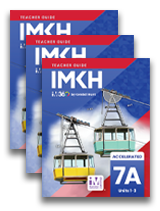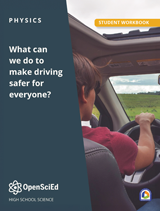Search Listing Name
product:
No Quick Fix: Exploring Human Body Systems
No Quick Fix uses systems as the fundamental concept to help students in grades 6-8 understand cell and tuberculosis biology. In a series of widening concentric circles, students learn that cells are elements in larger systems, such as the immune system and the even larger system of the human body. Students also interact with the human social systems: health care and public education. They will take on the role of physician and begin to search for the cause and resolution of the problem. While unraveling the interacti
product:
OpenSciEd Biology + Earth & Space Unit 2: Matter & Energy in Organisms & Ecosystems Student Edition
OpenSciEd High School addresses all high school NGSS standards. This comprehensive science curriculum empowers students to question, design, investigate, and solve the world around them.
- Phenomenon Based - Centered around exploring phenomena or solving problems
- Driven by Student Questions - Storyline based on students’ questions and ideas
- Grounded in Evidence - Incremental building and revision of ideas based on evidence
- Collaborative - class and teacher figure out ideas together
product:
Illustrative Mathematics: Kindergarten Student Edition Set
Illustrative Mathematics K-5 MathTM is an IM Certified product providing trusted, highly rated materials to ensure students thrive in mathematics. Each Illustrative Mathematics lesson has four phases, from pre-unit practice modules to cool downs, focusing students’ attention on definitions, notations, and graphical conventions contributing to the development of real numbers.
The big ideas in kindergarten include: representing and comparing whole numbers, initially with sets of objects; understanding and applying addition and subtraction; and describing shapes
product:
BSCS Science Tracks: Connecting Science And Literacy: Designing Sound Systems Teacher Edition
SCIENCE & TECHNOLOGY-This module allows students to explore various sound systems in "sound centers." In the centers, they make and compare sounds by striking, plucking, and blowing through objects. They describe and record their explanations of how the systems produce sounds. They search for sounds at home and in the neighborhood and describe and compare how those sounds are produced. In later lessons, the students investigate ways to change pitch and volume by changing something in a sound system. They develop a musical system using


